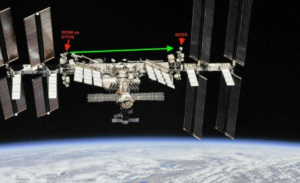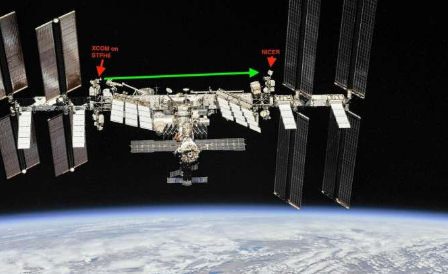Quantum X-ray Technology: The Future of Space Exploration
Introduction: A New Era in Space Exploration
Space exploration has always pushed the boundaries of human knowledge, technology, and innovation. From early telescopes to advanced satellites, each breakthrough has propelled us closer to understanding the universe. One of the latest game-changing technologies is quantum X-ray technology, a revolutionary advancement poised to redefine the way we explore deep space. This cutting-edge technology is expected to enhance spacecraft navigation, improve planetary surface imaging, and unlock mysteries of the cosmos that were once beyond our reach.
In this article, we delve into the transformative impact of quantum X-ray technology, its applications in space exploration, and how it could shape the future of interstellar missions.
Understanding Quantum X-ray Technology
Quantum X-ray technology combines the principles of quantum mechanics with advanced X-ray imaging techniques. Unlike traditional X-ray systems, which rely on conventional electromagnetic radiation, quantum X-rays harness quantum entanglement and high-energy photon interactions to produce ultra-precise imaging and data analysis. This results in enhanced resolution, better penetration through dense materials, and increased efficiency in scanning distant celestial objects.
How Does Quantum X-ray Imaging Work?
At its core, quantum X-ray imaging utilizes entangled photons, which have unique properties that allow them to interact with matter in ways classical X-ray photons cannot. These photons can pass through obstacles with minimal distortion, offering clearer and more accurate imaging. Additionally, quantum detectors enhance signal processing, reducing noise and improving data fidelity.
This innovation makes quantum X-ray technology an ideal tool for studying exoplanets, asteroid compositions, and deep-space phenomena with unprecedented clarity.
The Role of Quantum X-ray Technology in Space Exploration
1. Enhancing Spacecraft Navigation and Communication
One of the critical challenges in deep-space exploration is precise navigation and communication. Traditional methods rely on radio signals, which experience delays and interference over vast distances. Quantum X-ray technology offers an alternative by using quantum entanglement-based communication, enabling faster and more reliable data transmission.
Additionally, X-ray pulsars—celestial objects emitting regular X-ray bursts—can be used as cosmic beacons for spacecraft navigation. Quantum X-ray sensors can lock onto these pulsars to provide real-time positioning, drastically improving autonomous spacecraft navigation beyond our solar system.
2. Revolutionary Planetary Surface Imaging
Current imaging technologies struggle to penetrate thick planetary atmospheres or subsurface layers. Quantum X-ray imaging allows scientists to peer beneath the surface of celestial bodies such as Mars, Europa, and Titan, detecting hidden underground water reservoirs, geological formations, and potential signs of extraterrestrial life.
By mapping planetary compositions with high accuracy, quantum X-ray technology will aid future robotic missions in selecting landing sites, drilling locations, and resource extraction zones for sustainable space colonization.
3. Analyzing Asteroids for Resource Mining
Asteroids hold vast amounts of precious metals and minerals that could support space industries and Earth’s growing demands. However, determining an asteroid’s composition before a mining mission is launched is a complex challenge.
Quantum X-ray spectroscopy can analyze the molecular and atomic structures of asteroids in real-time, identifying valuable resources such as water ice, platinum, and rare earth elements. This advancement will be crucial for the future of asteroid mining, allowing for efficient and economically viable extraction of extraterrestrial materials.
4. Deep Space Exploration and Dark Matter Research
The mysteries of dark matter and black holes have long perplexed scientists. Traditional observational tools are limited in their ability to detect and measure these cosmic phenomena. Quantum X-ray sensors, however, offer a new way to study these elusive aspects of the universe.
With their ability to detect weak X-ray signals emitted by high-energy cosmic events, these sensors will help researchers better understand the nature of dark matter, the structure of black holes, and the fundamental laws of physics governing our universe.
Advantages of Quantum X-ray Technology in Space
Higher Precision and Sensitivity
Quantum X-ray imaging provides unmatched precision compared to traditional X-ray systems. Its ability to distinguish fine details makes it an essential tool for planetary exploration and astrophysical research.
Reduced Energy Consumption
Space missions require highly efficient technologies due to power constraints. Quantum X-ray devices consume significantly less energy while delivering superior results, making them ideal for long-duration missions.
Compact and Lightweight Design
Traditional imaging equipment is often bulky and difficult to transport into space. Quantum X-ray sensors are designed to be more compact, allowing for easier integration into spacecraft and planetary rovers.
Minimal Signal Interference
Unlike conventional radio-based systems, quantum X-ray communication is less susceptible to interference from cosmic radiation and space weather, ensuring clearer and more secure transmissions.
Future Prospects of Quantum X-ray Technology in Space Missions
The future of space exploration is on the brink of a technological revolution, and quantum X-ray technology is at the forefront of this transformation. NASA, ESA, and private space companies such as SpaceX and Blue Origin are actively researching ways to implement this groundbreaking technology in upcoming missions.
Some anticipated developments include:
-
Quantum X-ray telescopes: Offering unprecedented views of distant galaxies, neutron stars, and exoplanets.
-
Interstellar probes: Equipped with quantum X-ray navigation systems to explore beyond our solar system.
-
Mars and Lunar colonization efforts: Using quantum imaging to locate underground water sources and optimize habitat construction sites.
-
Space-based quantum communication networks: Providing ultra-secure and high-speed data exchange between Earth and deep-space missions.
Conclusion: A Quantum Leap for Space Exploration
Quantum X-ray technology is set to revolutionize space exploration, offering enhanced navigation, improved planetary imaging, and deeper insights into the cosmos. By leveraging the power of quantum mechanics and high-energy X-ray imaging, this technology will unlock new frontiers, making interstellar travel and resource utilization more feasible than ever before.
As space agencies and private enterprises continue to push technological boundaries, quantum X-ray technology will undoubtedly play a pivotal role in shaping humanity’s future beyond Earth. The next era of space exploration is here, and with quantum X-ray advancements, the universe is closer to us than ever before.

Also Read :
